Written by celebrated landscape artist, instructor, and author Mitchell Albala, this richly informative and beautifully illustrated volume leads you step by step through his approach to the genre, from establishing a composition using basic shapes to applying time-tested color strategies, with all-new lessons, practical exercises, and special topics, including:
- The Complete Color Strategy. What are the three aspects of color contrast that guide a painting’s strategy?
- Notan. Explore this special type of compositional study, which identifies the underlying shapes and patterns of a composition.
- Picture Formats. How does the picture format—horizontal, vertical, or square—affect the composition? What are the pros and cons of each?
- Color Grouping. A full chapter details this special practice, which helps maintain harmony by organizing colors into a limited number of groups.
- Composition. An in-depth review of variation, movement, and active negative space, with illustrations that diagram the action in each example.
- Workshop Exercises. Instead of demonstrations that show how the author paints, The Landscape Painter’s Workbook includes 10 skill-building workshop exercises to help you work through essential lessons on your own.
With examples of work by 45 contemporary landscape painters—more than 80 paintings in all—in oil, acrylic, pastel, and watercolor, the lessons are suitable for all mediums. Each painting is thoroughly analyzed in terms of shape, composition, or color, with supporting diagrams, thumbnails, and photographs.
The Landscape Painter’s Workbook inspires and informs all artists, from aspiring to accomplished, on how to successfully portray the majesty and subtlety of the natural world.
The For Artists series expertly guides and instructs artists at all skill levels who want to develop their classical drawing and painting skills and create realistic and representational art.
Read more
1225 reviews for The Landscape Painter’s Workbook: Essential Studies in Shape, Composition, and Color (Volume 6) (For Artists, 6)
Add a review
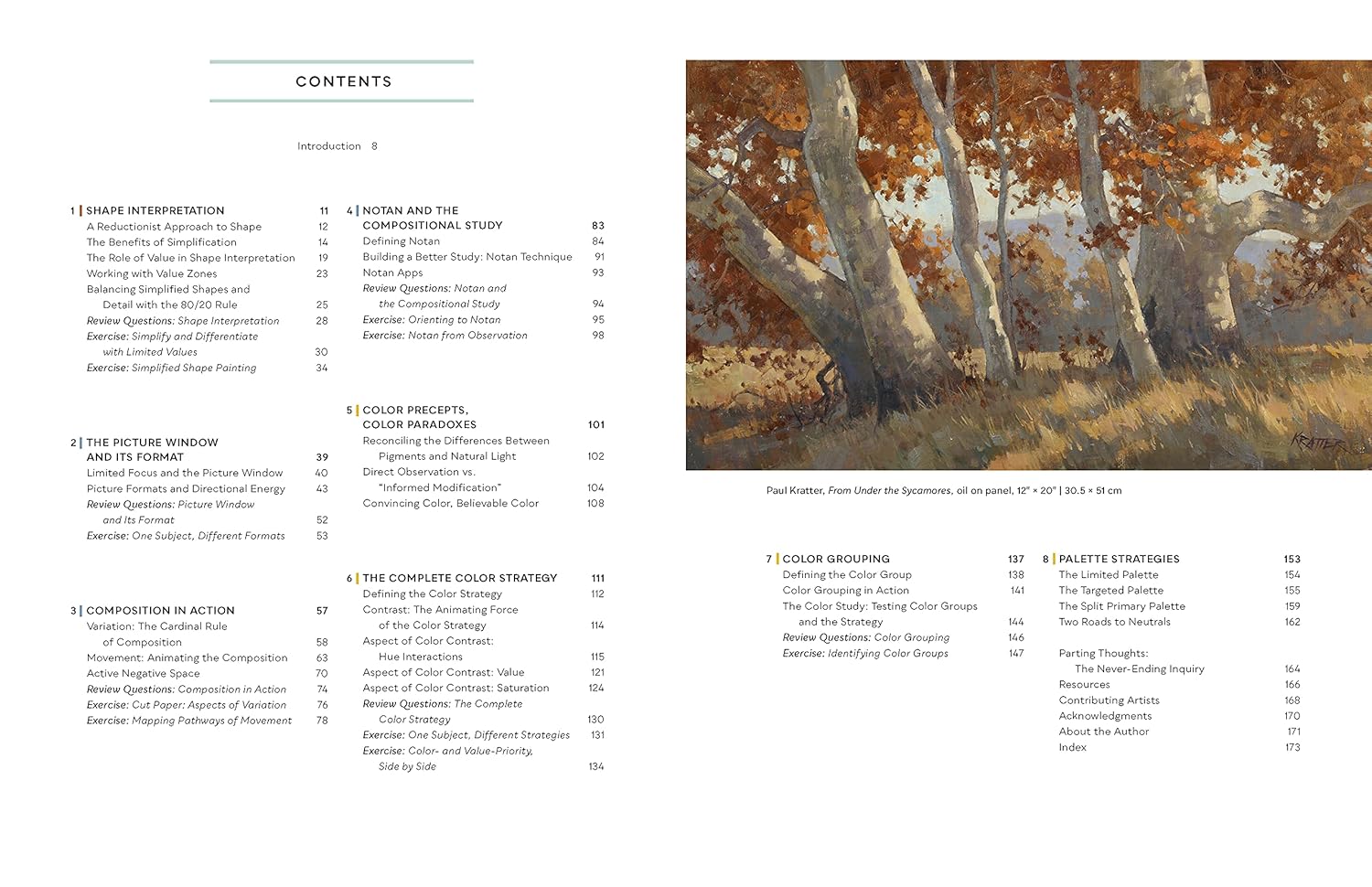
Original price was: $26.99.$14.99Current price is: $14.99.

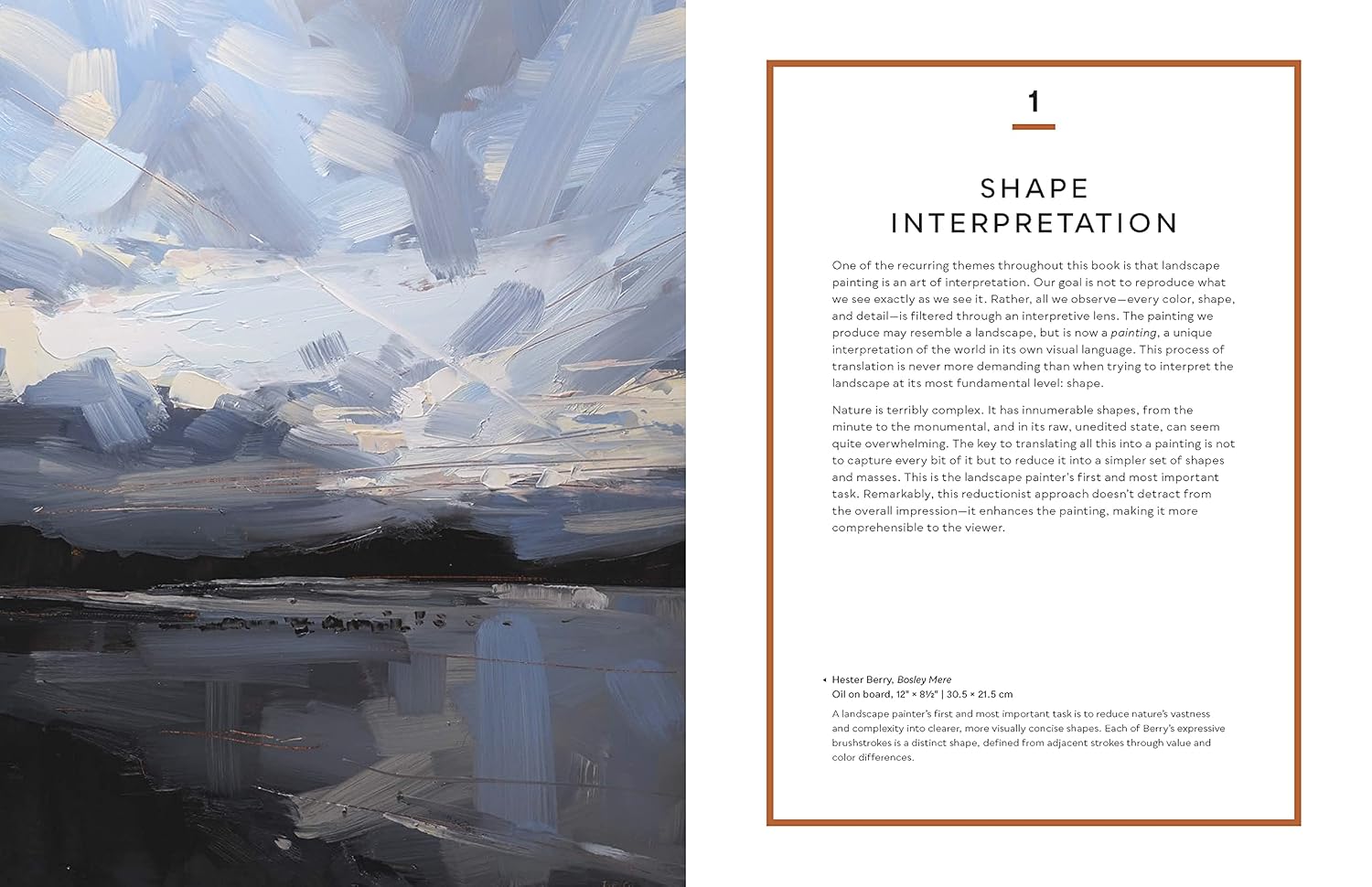
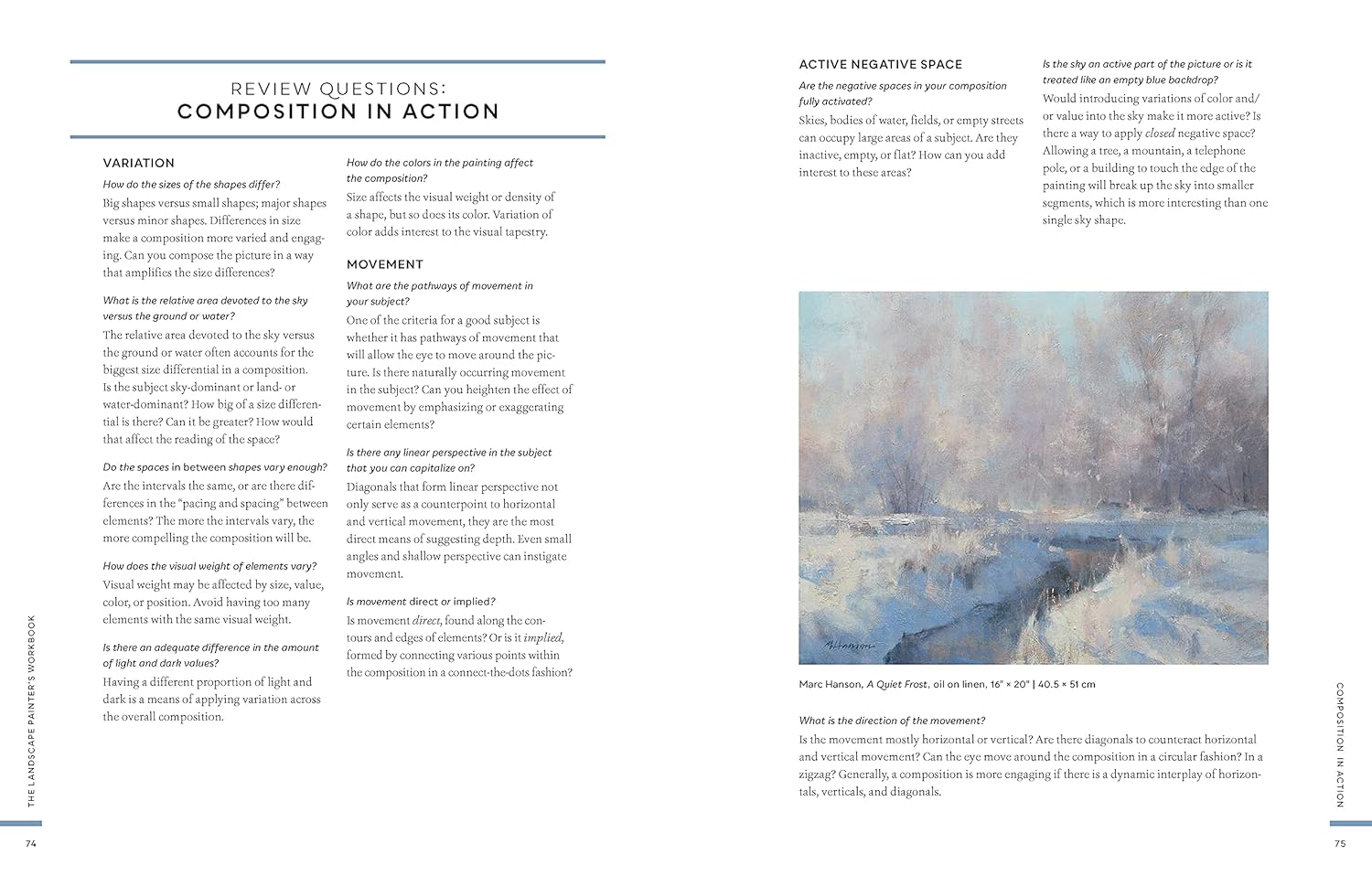
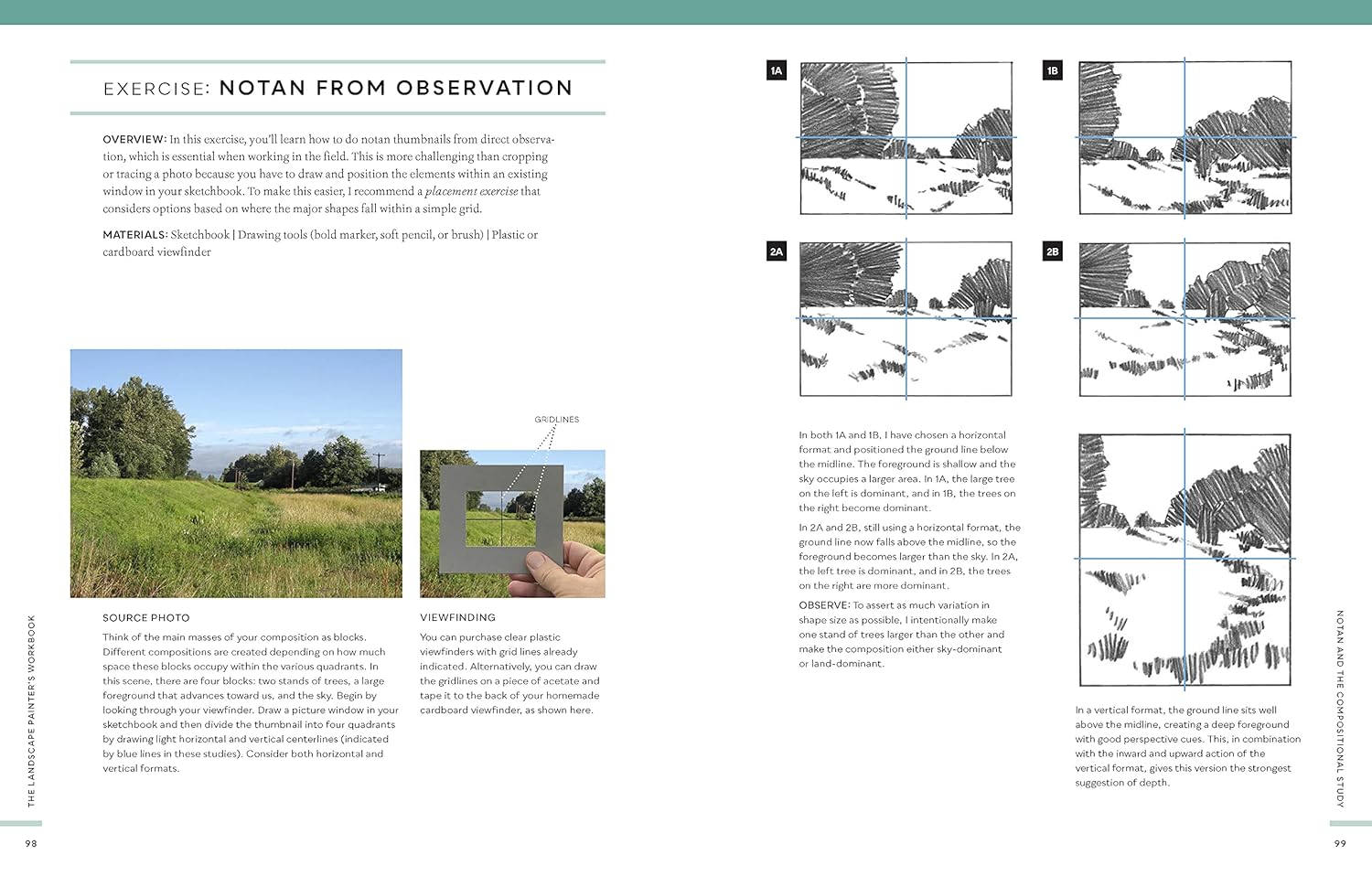
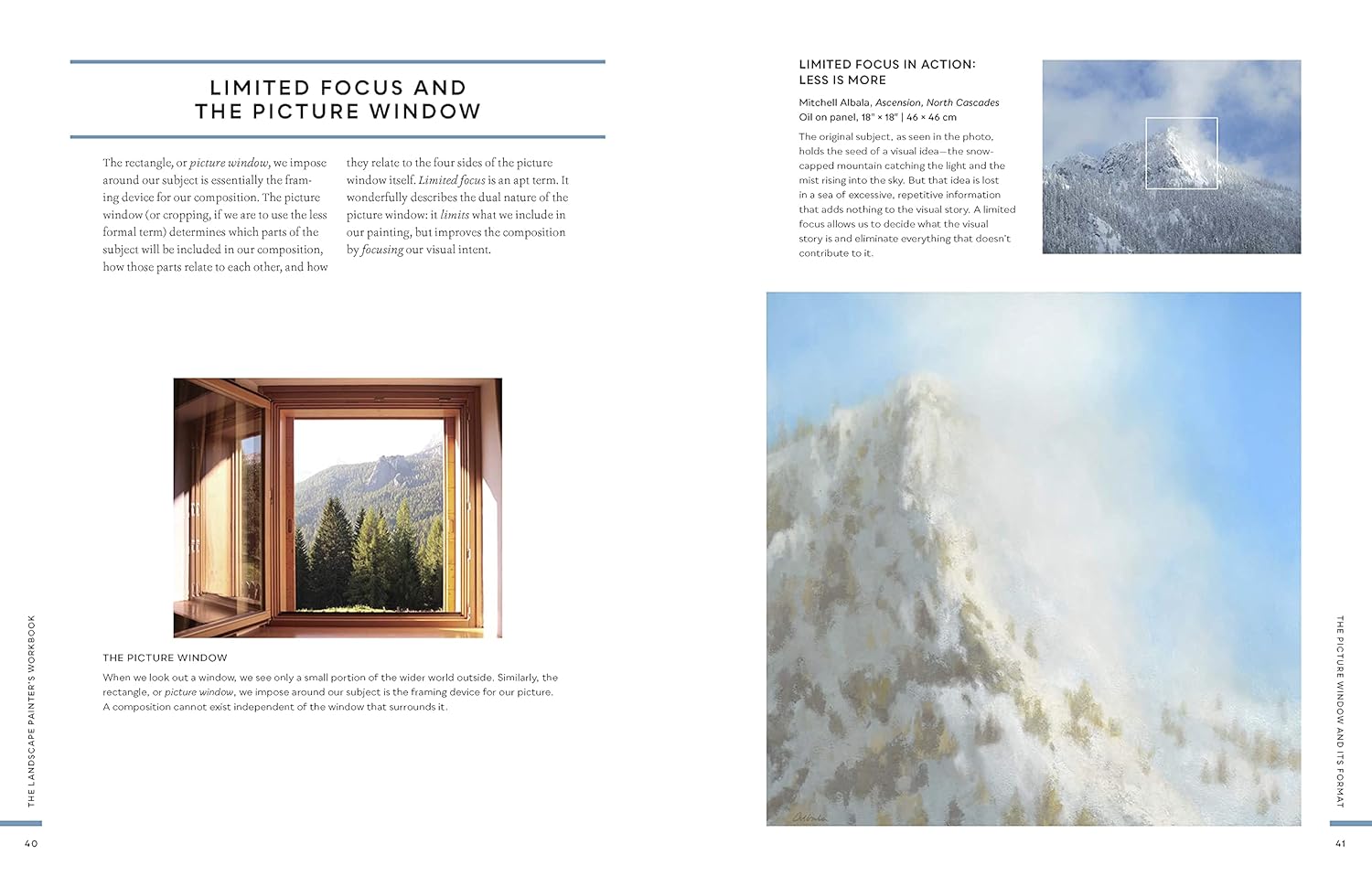
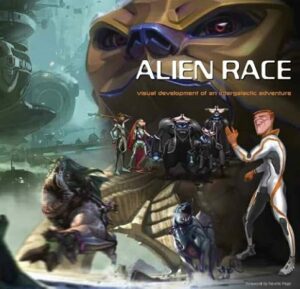
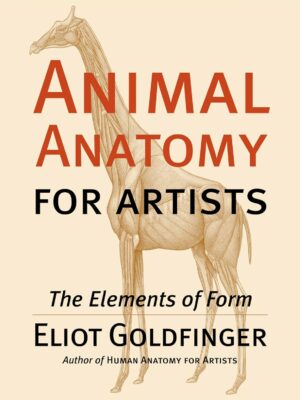
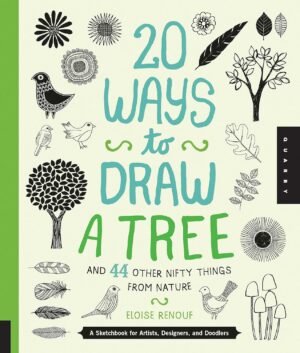
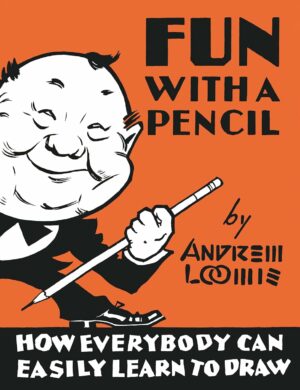
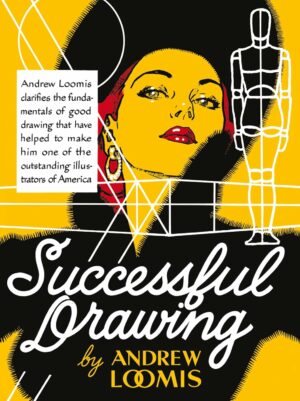


Sunil –
This is a must read book for any artist, especially for landscape artists. Easy to read, great examples, and good exercise.
in Texas –
I am a photographer and I learnt a lot from this book. When I look at a raw image from the camera, one of the questions that comes up is “Why I did I take this picture – what was compelling about the scene?” What emotional impact do I want the print to have pon the viwer? The next question may be how do I develop the image to have that impact? This is where I find Albala’s book so helpful. Once I decide what I want to do or try some options, I can use what I have learnt from this book to take me to artistic adjustments to be made using a tool like photoshop.
S J Texas –
This is a great book for any artist wanting to study landscape painting. Straightforward and great instructions and exercises. Excellent examples of other artist’s work in the book. The spiral version is well worth the extra money if you can get it. If you’re undecided about the purchase I say get it while you can!
LostInNJ –
I loved the imagery in the book but I expected more of a tutorial style book rather than a general technique discussion. It simply didn’t have enough instructions on how to achieve similar results as pictured. That being said I loved the examples of art in the book and I will continue to use it and try to learn the processes to achieve similar results.
T. Anderson –
I bought the Kindle version first, and I was impressed enough to order a paper copy for my friend, and I finally had to order the paper version for myself as well. Professor Albala has filled his book with some of the loveliest landscapes I’ve ever seen, by himself and other artists, some “realistic,” most impressionistic, and a few openly abstract. Some are of natural scenery, some of urban. Each is described, and most are used to illustrate some of the principles he is trying to inculcate. His exercises aren’t all step-by-step, and they’re more suggestions with examples, achievable by any who try; and he also tries to help people avoid being slaves to “reality” and merely copying photographs. You are MAKING ART. Art represents, and not just the literal view; in that sense at least, all art is “abstract;” but to be good, it has to be “believable.” It also has to have balance (good composition, good light/dark, good color). To this end, he emphasizes a careful beginning — strategy — the way a general plots a campaign — and what follows is much more likely to fall in line. His work is really helping me develop beyond literal reality into a more fluid, intuitive, “painterly” style — and it’s very liberating!
SAllen –
I really like this book. Easy to read, lots of practical information, and exercises. I like this author. For landscape artists working in any medium.
Sophie –
für Landschaftsmalerei, mit vielen Beispielbildern und einfach erklärten, nachvollziehbaren Erklärungen für das, was wichtig ist beim Portraitieren einer Landschaft; die Farben, Werte, Platzierungen. Die Auswahl des Motivs, Farbabstufungen, Licht und Schatten. Wertvolle Tipps und Hinweise, sehr empfehlenswert.
Manuel Peña –
Me encanta. Puntos de vista innovadores
S Mitchell –
I really loved this book. It looks like a coffee table book in terms of beauty but it’s full of useful information on composition and colour that is just as helpful for (amateur) photographers such as myself as it must be for budding painters. Mitchell Albala is an accessible writer too and so the whole thing makes sense. while being an easy read.
This all isn’t too surprising because painters are about over a thousand years ahead of photographers in terms of studying what works in landscapes. So I plan on absorbing all the knowledge and then running to my camera to click away productively to my heart’s content.
So I now have lots of ideas on how to improve my photos using linear perspective, variation and movement while not making a blunder when changing my colours around in Photoshop. What Mitchell Albala calls “limited focus and the picture window” the photographers amongst us would call “cropping”. Best of all I now have lots of ideas on how to make bland skies interesting without resorted to massively increasing the contrast on the clouds – a Lightroom/Photoshop trick that isn’t often convincing.
I also thoroughly recommend Mitchell Albala’s other book – Landscape Painting: Essential Concepts and Techniques for Plein Air and Studio Practice. (I bought it with some book tokens and so couldn’t use Amazon or leave an Amazon review for it.) Landscape Painting is a bit more detailed but equally fantastic for photographers. I would give that five stars too.
Placeholder –
I was raised by a skilled artist, but I was not taught painting as a kid. I’ve taken a couple classes at jr colleges, and I could do better than I do. I know it’s lack of actually practicing that is to blame, but I want to work at it and need something that’s not more of the same. Enter this book. The author is both a skilled artist and a skilled educator, a rare combo.
After reading the first chapter (tonal values, massing) I saw the world differently and was practicing looking around me to see this in real life.
Here’s the rub: if you’re looking for something to help you as an absolute beginner starting out totally from scratch, this book will challenge you because it isn’t holding your hand on the most basic stuff. They’re providing examples in various mediums and the very first exercise will ask you to do something much more interesting than shading a cube (a common beginner exercise).
I hope others experience what I’m enjoying which is that this is a thoughtful, beautiful presentation with sophisticated examples that will challenge your brain to do things differently. Highly recommended for those with ambition and an adventurous attitude, but not a ton of experience. …. and if you’ve got more experience, use this for inspiration and some pretty great prompts. These exercises / examples as they build through the book could be skill refining prompts where you are reminded of stuff like notan, a bunch of color and palette strategies, movement, active negative space, and so on.
k_nyc –
Fabulous book on landscape painting (and I have a LOT). Loved reading it and am enjoying studying and practicing the tips. Great book
Deborah Smith –
I was very impressed with this book and will refer to it often. It points out the importance of value and composition. I taught a series of drawing and painting classes and used it a lot in showing students how to simplify their paintings. It stresses creating a focus in your painting and how to ignore superfluous detail. I have found that one of the greatest stumbling blocks to a lot of paintings is too much information. Once you know how to break things down into simple shapes and values it becomes a lot easier. This book was what I was looking for in my teaching and in my own work. You know, as I work with it today, if you had to choose only 1 painting book you wouldn’t go wrong with this one.
B H –
Beautiful book. Inspiring. Many ideas to spur on the painter in me 🙂